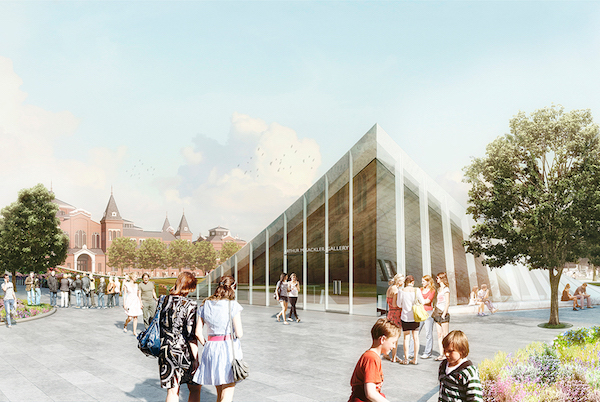Art & Exhibitions
Smithsonian’s $2 Billion Overhaul Places Emphasis on Art
That is, if Washington infighting doesn't get in the way.

Photo via: Art Daily
That is, if Washington infighting doesn't get in the way.

The Smithsonian revealed yesterday the details of a $2 billion master plan to renovate its South Mall museums, which run alongside Washington D.C.’s Independence Avenue and include the Hirshhorn Museum and the Freer Sackler Gallery, the Washington Post reports.
The master plan—described as the biggest project to hit the Mall since the 1902 McMillan Plan—has been designed by the Copenhagen and New York-based architecture studio BIG (Bjarke Ingels Group). It has three main goals: to improve visitor services, to create clear entrances and connections (both underground and above ground) between the museums and gardens, and to address infrastructure needs, like renovating mechanical systems that needed replacing, including leaking roofs.
Already two years in the making, the master plan is still a long way from completion. Both the National Capital Planning Commission and the Commission of Fine Arts have to approve the proposal first, before it can go ahead. Construction won’t begin for at least another half-decade, and it is expected take between 10 to 20 years to complete. The initial cost estimate of $2 billion will be sourced from a mix of federal and private funds. However, no itemized budget has thus far been drafted.
“The master plan provides the first-ever integrative vision for the South Mall,” Wayne Clough, secretary of the Smithsonian institution, told Art Daily. “Bjarke Ingels Group has given us a plan that will offer open vistas, connected museums, galleries bathed in daylight, new performance venues, gardens that invite people into them, and it will visually attract visitors who will have an unparalleled experience,” he continued.
Several Major Projects
The master plan comprises several major projects, including the expansion of the iconic Smithsonian Castle—opened in 1855 and currently serving as the institution’s headquarters—with the addition of two underground levels of visitor amenities. The Hirshhorn Museum will also expand underground, gaining gallery space and new venues for public programing. According to the Washington Post, the currently empty Arts and Industries building would undergo renovations as well to house the American Latino Museum, which is still awaiting congressional approval.
“It’s a great honor and a humbling challenge to reimagine one of the most significant American institutions […],” Bjarke Ingels, founding partner of BIG, told Art Daily. “[…] We have conceived a master plan for the South Mall campus as an example of radical reinterpretation. To resolve the contradictions between old and new, and to find freedom within the boundaries of strict regulation and historical preservation, we have chosen to carefully reinterpret the elements that are already present in the campus. We believe this plan holds the potential to guide the Smithsonian South Mall campus into the future while remaining firmly rooted in its heritage.”
And yet, one of the projects of this long-term overhaul might prove particularly controversial. According to the Washington Post, the Enid A. Haupt Garden—located on the roofs of the National Museum of African Art, the Arthur M. Sackler Gallery, and the S. Dillon Ripley Center—would be replaced by a modern green space surrounded by skylights, aimed at flooding the galleries with natural light.
“This is meant to draw more people in, to create a hub, create more activity,” Kirk Savage, a professor of history of art and architecture at the University of Pittsburgh, told the Washington Post. “And let’s face it, that’s what museums have to do now. I understand the rationale for it, but I like the [Haupt] garden. It’s a little refuge, an oasis.”